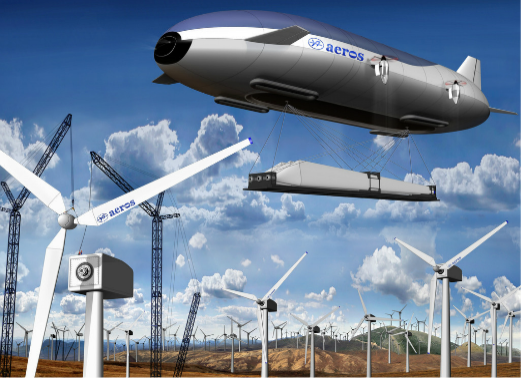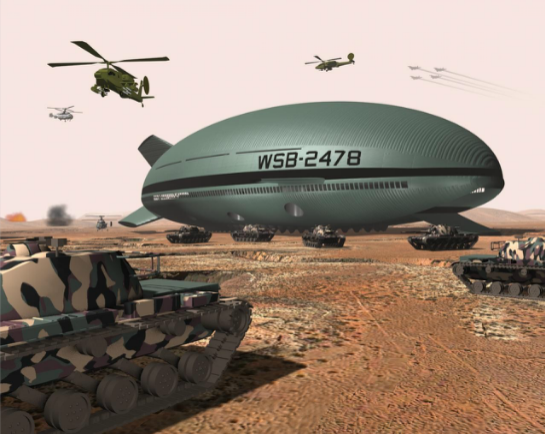Zeppelins Making A Comeback? Aeroscraft Airship Is Future Of Air Transportation, Says California Company
Seventy-five years after the Hindenburg disaster eliminated zeppelins from the skies, a southern California company wants to bring them back. The Aeroscraft airship from Montebello, Calif.-based Worldwide Aeros Corp. utilizes new technology to avoid the problems of old zeppelins and become the future of air transportation.
Worldwide Aeros says the zeppelin isn’t trying to replace the aircraft and the airplane, but that the Aeroscraft it can provide a new, environmentally friendly and low-cost solution for businesses and the military.

The Aeroscraft zeppelin has an oversized cargo bay and can on-load and off-load while hovering in one place without the need for a ground crew. It can also take off and land vertically, making it a potentially excellent option for delivering cargo to disaster areas, war zones, marine locations and anywhere else that doesn’t have a designated airstrip.
A key to the Aeroscraft zeppelin is the Control of Static Heaviness, or COSH, system developed by Worldwide Aeros. COSH controls the zeppelin’s buoyancy with non-flammable, compressed helium. This system makes the zeppelin safer and allows it to offload heavy cargo.
The Aeroscraft zeppelin uses less than one-third of the fuel of a traditional cargo plane, meaning it can fly further with a smaller carbon footprint. Worldwide Aeros said it can travel more than 3,000 nautical miles without needing to refuel.
Unlike the old zeppelin model, the Aeroscraft isn’t just a balloon. It has a rigid structure made from ultra-light, bullet-proof aluminum and carbon fiber, so it isn’t dependent on gas to keep its shape.
The Aeroscraft was designed to movie heavy and oversized, and the firm is building models capable of carrying 66 tons and 250 tons. This could be invaluable for companies trying to build traditional and new-age energy plants in remote areas without transportation infrastructure. It also sees applications for better delivery of perishable foods and even the possibility of a sky cruise.

There are also military applications, including resupply and mobility, emergency response and humanitarian aid, fire containment and medical treatment. The U.S. government has already invested $3 million into the project.

“The U.S. Department of Defense and U.S.A.F. desire enabling the movement of large payloads and brigade-sized units to virtually any point of need, quickly, and with route flexibility,” Worldwide Aeros said on its website. “Fortunately, the Aeroscraft offers U.S. and allied militaries empowerment in every scenario.”
Of course, the Aeroscraft can only travel at about 115 mph, much slower than a standard jet aeroplane. It most likely will never be popular as a travel option, as illustrated by the cartoon spy, Archer.
Worldwide Aeros said that the first of the airships will hit the market in 2015.
© Copyright IBTimes 2024. All rights reserved.






















